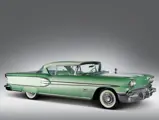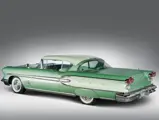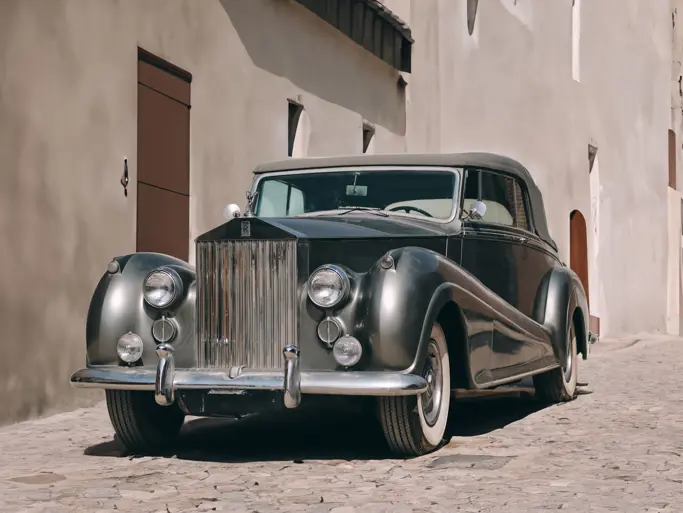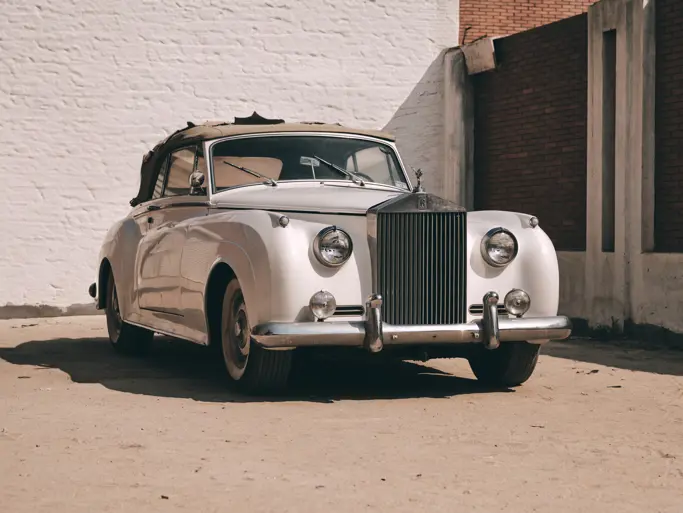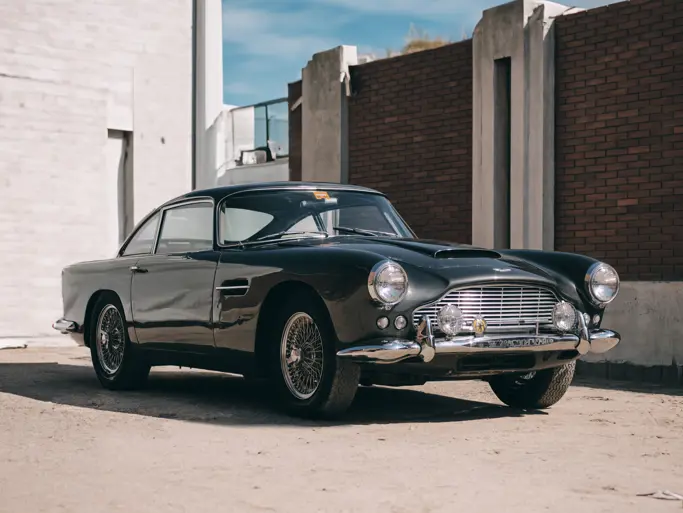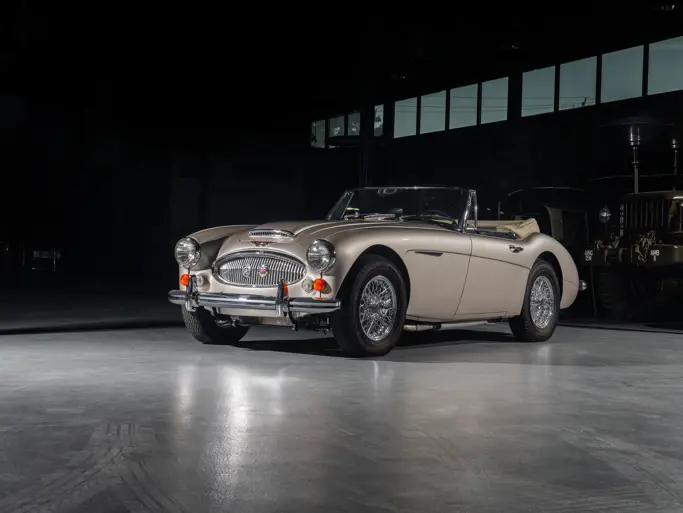The Milhous Collection
1958 Pontiac Bonneville Super Deluxe Sport Coupe
{{lr.item.text}}
$121,000 USD | Sold
 | Boca Raton, Florida
| Boca Raton, Florida
{{internetCurrentBid}}
{{internetTimeLeft}}

Series 25. 300 bhp, 347 cu. in. OHV V-8 engine, four-speed Hydra-Matic transmission, independent coil spring front suspension, live rear axle with trailing arm coil spring suspension, and four-wheel hydraulic power drum brakes. Wheelbase: 122"
• Prestigious early Bonneville coupe
• 300 bhp Tri-Power engine
• Highly-accessorized with such features as Trans-Portable radio
Your father might have driven an Oldsmobile, but the Pontiac probably belonged to your grandfather. All that changed in the 1950s when Pontiac truly became a performance marque. At the end of the 1954 model year, Pontiac retired both its six and straight-eight engines. For 1955, all cars had V-8 overhead-valve powerplants that shared some heritage with the small-block Chevy. In mid-year, a $35 Power Pack option added a four-barrel Rochester carburetor, pushing horsepower to 200 on Hydra-Matic cars.
For 1956, the engine was enlarged to 317 cubic inches, and a dual four-barrel option developed a hefty 285 bhp. Only about 200 cars were so-equipped. The 1957 model year brought another displacement increase, to 347 cubic inches. A special Bonneville convertible was released in the Star Chief line, using Rochester fuel injection. This engine was rated at 315 bhp. Just 630 were built. It was, however, not the most powerful 1957 Pontiac. In December 1956 a NASCAR Tri-Power option was introduced with three two-barrel carburetors.
In an uncharacteristic move, General Motors introduced new bodies and chassis for all 1958 cars. In this shuffle, Pontiac made the Bonneville a separate series, comprising a convertible and a hardtop coupe. Standard engine was a 285 bhp, four-barrel V-8, but fuel injection and Tri-Power were still available. Very few injected cars were built, largely because the system had yet to be perfected. Performance enthusiasts generally opted for Tri-Power instead, which included three Rochester two-barrel carbs, 10.5:1 compression and a high-lift camshaft.
The Pontiac Bonneville being offered here is a well-restored, highly accessorized Super Deluxe Sport Coupe. Equipped with Tri-Power and the Strato Flite four-speed Hydra-Matic transmission, it has power steering, power brakes and power windows. It has the unusual Trans-Portable radio introduced for 1958. This radio could be removed from the car and used as a portable at home, at a picnic or on the beach. The car is also fitted with a rear speaker and rear antenna, used when the radio is plugged into the dashboard. Other accessories include rear fender skirts, a tissue dispenser and door edge guards.
The car is painted in two-tone green and remains in excellent cosmetic condition. The interior is done in matching hues of green, with the seats upholstered in a vinyl-cloth combination motif. The quality of the upholstery work is excellent, as is the headliner and dashboard.
The engine compartment is clean as is the nicely detailed trunk. Three artifacts of its earlier life remain in the rear window: two decals from the Automobile Club of Southern California and one for the Pontiac Oakland Club International. The car rides on Remington Cushion Aire C78-14 whitewall tires.
A few years later, the GTO commanded all the attention of young Pontiac buyers. In 1958, however, the performance Pontiac was very much the Bonneville, very often a Tri-Power Super Deluxe Sport Coupe like this one. It was fast, stylish and elegant, all the qualities a successful businessman looked for in a new boulevard cruiser and performance car for the daily commute.

